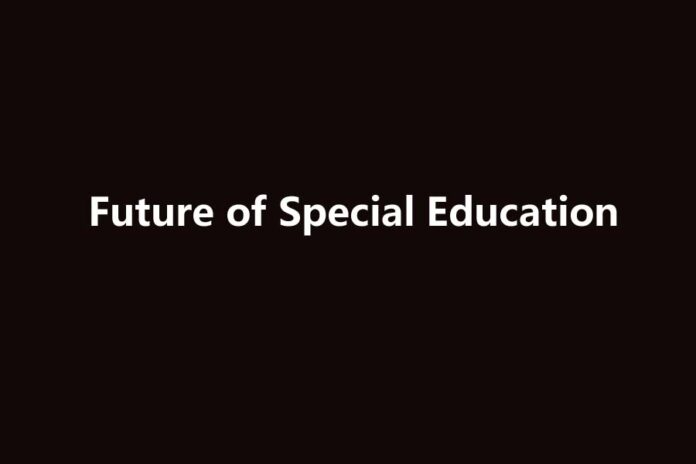Picture a classroom where learning isn’t a one-size-fits-all experience, but a personalized adventure uniquely crafted to each and every student’s needs. Each students possess a unique set of skills, a vibrant garden where each unique mind blooms at its own pace. No longer content with traditional and stagnant approach, neuroeducation delves into the individual landscape of each learner’s mind, unleashing potential and overcoming unique hurdles. This is the promise and vision of neuroeducation that seeks to bridge the gap between workings of the brain and the art of teaching.
What is Neuroeducation?
Neuroeducation, a flourishing field, is demystifying the brain through a blend of neuroscience, education and educational psychology. At this crossover of neuroscience and education, this interdisciplinary seeks to understand the learning process of every individual. Neuroeducation offers evidence-based insights that possess the power to reform fundamental mechanism of education and our approach to it. It helps us gain a deeper understanding of how our brain retains information, processes stimuli, and also how emotions may affect the learning process. Adaptation of learning processes based on neuroeducation transforms the learning and teaching experience and becomes the next step toward a more versatile educational space that provide support to a diverse set of students.
At the heart of this reformative approach is brain plasticity. The astonishing ability of the brain to adapt and rewire itself throughout life is what makes it so special. Like a gardener, neuroeducation nurtures this plasticity, by creating unique cognitive framework for each individual mind; by stimulating neural pathways and encouraging the brain to flourish. This means that with the right approach, we can help students with learning disabilities overcome their challenges. Educators can tailor their approach, providing the perfect blend of tools and techniques to nurture each blossoming minds.
Learning Disabilities
Studies have shown that around 8% of the Indian population have Specific Learning Disability (SLD). Learning disability affects how individual processes information. Learning disabilities such as Dyslexia, ADHD, dyscalculia, etc makes the student’s academics lives a struggle. The current educational methods fall short in helping these students. Students with learning disabilities can benefit from this emerging approach of inclusive and experiential learning experience greatly. Neuroeducation has transformed special education in many ways. This approach can tap into hidden potential and effectively utilize strengths that remained unexplored or neglected before. By increasing effort to understand the neurological underpinnings of learning, neuroscience can pave way for teachers to understand every student’s needs, especially those with learning disabilities.
How Neuroeducation is making a difference
Personalized learning
The field of pedagogy can be seen shifting from traditional and generalised learning experience to a personalised learning approach. Educators must possess extensive understanding of all the nuances of the learning disabilities to ensure that no students are overlooked. Common prejudices arising from ignorance can be harmful to the students, which is why awareness is of the utmost importance.
Educators need to think beyond the one-size-fits-all methods. By understanding the neurological basis of a student’s learning style, educators can adapt teaching methods, pace, and materials to suit each student’s unique needs. For instance, some students may learn visually while others prefer kinesthetic style.
Early detection
Early detection is key and where most can have a difficult time, with increasing awareness this has changed. Neuroimaging techniques like fMRI can provide valuable insights into brain function and identify early signs of learning disabilities. By addressing challenges before they escalate, educators can create a supportive foundation for lifelong learning
Technology Integration
Equipping educators equipping educators with the knowledge and tools to support diverse learners is a critical aspect. Neuroeducation utilizes technology to create engaging learning experiences. Technology offers a wealth of tool such as speech-to-text software, virtual reality simulations and assistive technology can offer personalised support to the students. For example, students with visual or spatial learning challenges can benefit immensely through technology such as virtual reality.
Strength-based approach
Neuroeducation places an emphasis on the development of strengths and on unique learning styles in every student. The ability to focus on what students can do well is essential to build their confidence and motivation. A student diagnosed with ADHD might find himself excelling in creative thinking and perform much better in a project-based learning environment. Bringing attention to one’s strengths builds up self-esteem and instils a growth mindset.
Learning Disabilities intervention
Dyslexia: Overcoming Reading Challenges
If we take the example of Dyslexia, who often struggle with reading. Their experience when it comes to learning, their struggle with connecting sounds with letters can be akin to navigating through a dense forest. Brain imaging studies has shown that dyslexic brains process language differently. Educators can shift to multi-sensory learning approach to help dyslexic students. Engaging multiple senses – visual, auditory and kinesthetic, pairing sounds with visual aids or tactile activities to strengthen phonological awareness. For example, tracing letters with their fingers while saying the sounds aloud can help reinforce neural pathways.
ADHD: Enhancing self-regulation and focus
ADHD or attention deficit hyperactivity disorder, is a neurodevelopmental disorder. People often experience a combination of inattention, hyperactivity, and impulsivity. Its symptoms may vary from person to person. The emphasise on structured routines, frequent breaks and strategies to enhance focus are the ways through we can help them. Educators need to focus on creating a structured environment with a potential of minimum distractions. Techniques such as mindfulness exercises, deep breathing and tech-based interventions such as organizational apps can help students improve attention. Allow for movement breaks, interactive games helping the students redirect their energy productively.
Dyscalculia: Building math confidence
Dyscalculia affects a person’s ability to understand numbers and mathematical concepts. They may struggle with counting, how numbers relate to each other, difficulty grasping mathematical concepts. Dyscalculia is sometimes overlooked as just “math anxiety” and this can be detrimental to the student’s growth as early detection can lead to early intervention. Neuroeducation introduces hands-on visual tool like number lines, manipulatives and interactive apps to make mathematical concepts more tangible. Strategies such as using real-world examples to illustrate abstract concepts has been effective.
Dysgraphia: Empowering written communication
Dysgraphia affects the ability to write, it can make it difficult for someone to form letters and put thoughts on paper. Tools such as graphic organizers, speech-to-text software and implementing strategies that address fine motor skills can be crucial to support students.
Neuroeducation is a thrilling frontier, constantly pushing the boundaries of what we know about how the human brain learns. By forging strong partnerships with neuroscientists, educators, families, and students themselves, we can create a truly personalised learning journey. At the heart of neuroeducation lies a profound respect for the human brain and its remarkable capacity for learning and growth. By embracing this understanding, we can create a more compassionate and supportive learning environment where students feel valued, understood, and empowered to reach their full potential. This isn’t just about test scores, it’s about encouraging a love for learning that allows students to explore their passions, unique talents and thrive in life.

